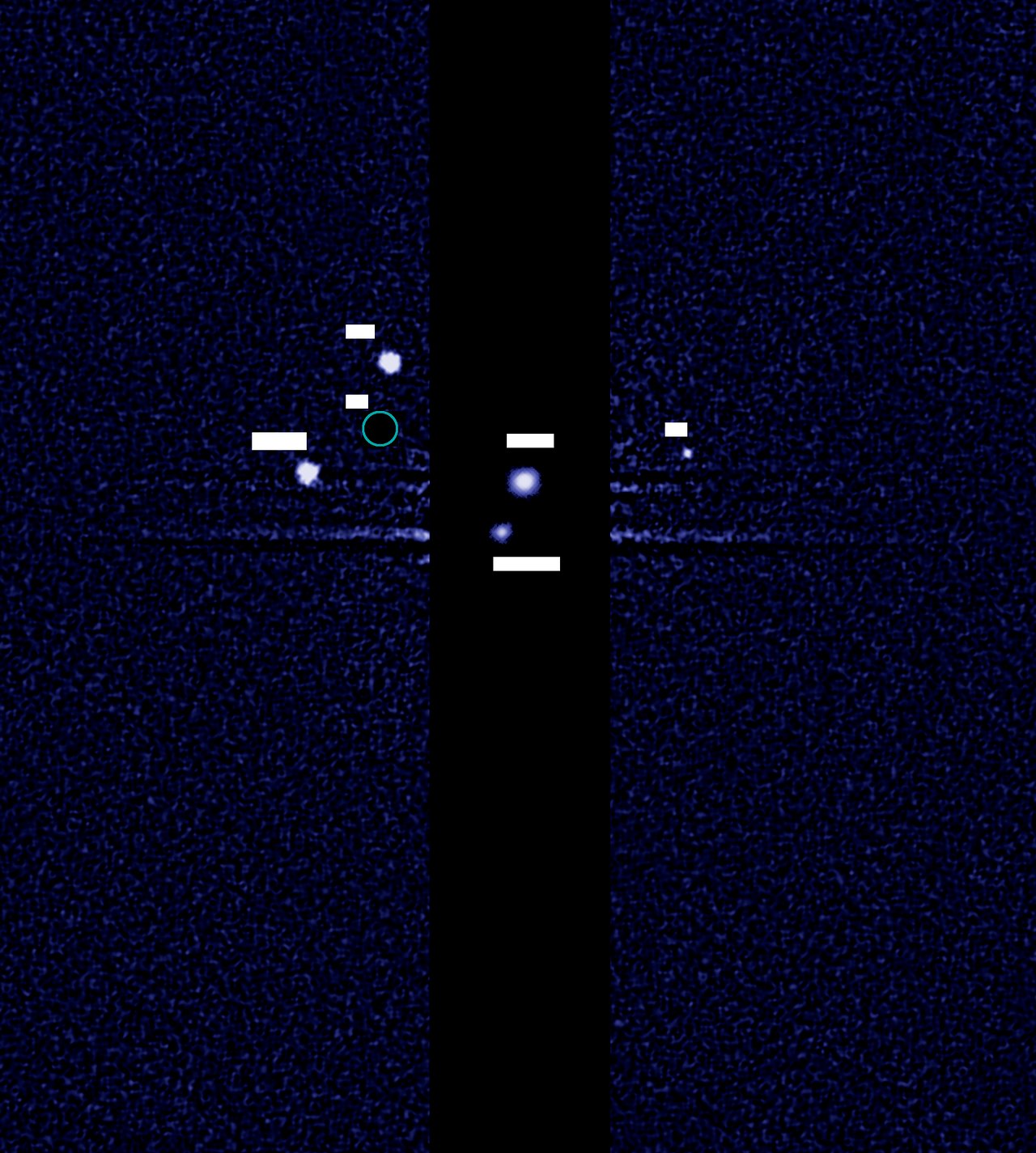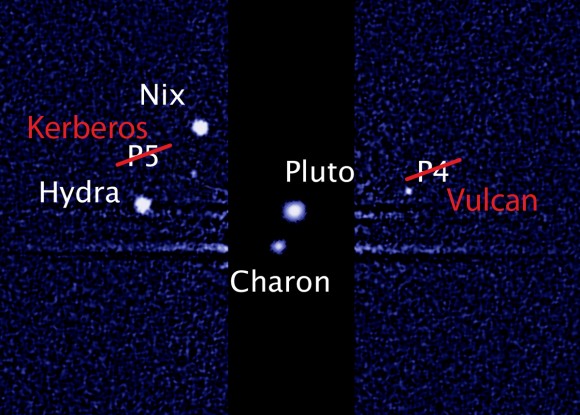ESA/HEIC Hubble Photo Release | 2012 July 11
A team of astronomers using the NASA/ESA Hubble Space Telescope has discovered a fifth moon orbiting the icy dwarf planet Pluto.
Pluto’s new-found moon, visible as a speck of light in Hubble images, is estimated to be irregular in shape and between 10 and 25 kilometres across. It is in a 95 000 kilometre-diameter circular orbit around Pluto that is assumed to lie in the same plane as Pluto’s other known moons.
“The moons form a series of neatly nested orbits, a bit like Russian dolls,” said Mark Showalter of the SETI Institute in Mountain View, USA, leader of the scientific team that discovered the new moon.
The Pluto team is intrigued that such a small planet can have such a complex collection of satellites. The new discovery provides additional clues for unraveling how the Pluto system formed and evolved. The favoured theory is that all the moons are relics of a collision between Pluto and another large Kuiper belt object billions of years ago.
Pluto’s largest moon, Charon, was discovered in 1978. Hubble observations in 2006 uncovered two additional small moons, Nix and Hydra. In 2011 another moon, known as P4, was found in Hubble data.
Provisionally designated S/2012 (134340) 1, or P5, the latest moon was detected in nine separate sets of images taken by Hubble’s Wide Field Camera 3 on 26, 27 and 29 June, and 7 and 9 July 2012.
Hubble Discovers a Fifth Moon Orbiting Pluto
NASA | STScI | HubbleSite | 2012 July 11
Fifth Moon Found Around Pluto
Universe Today | Jason Major | 2012 July 11
A fifth moon for Pluto!
Discover Blogs | Bad Astronomy | 2012 July 11
Pluto Now Has Five (Yes, Five) Moons
Discovery News | Ian O'Neill | 2012 July 11




